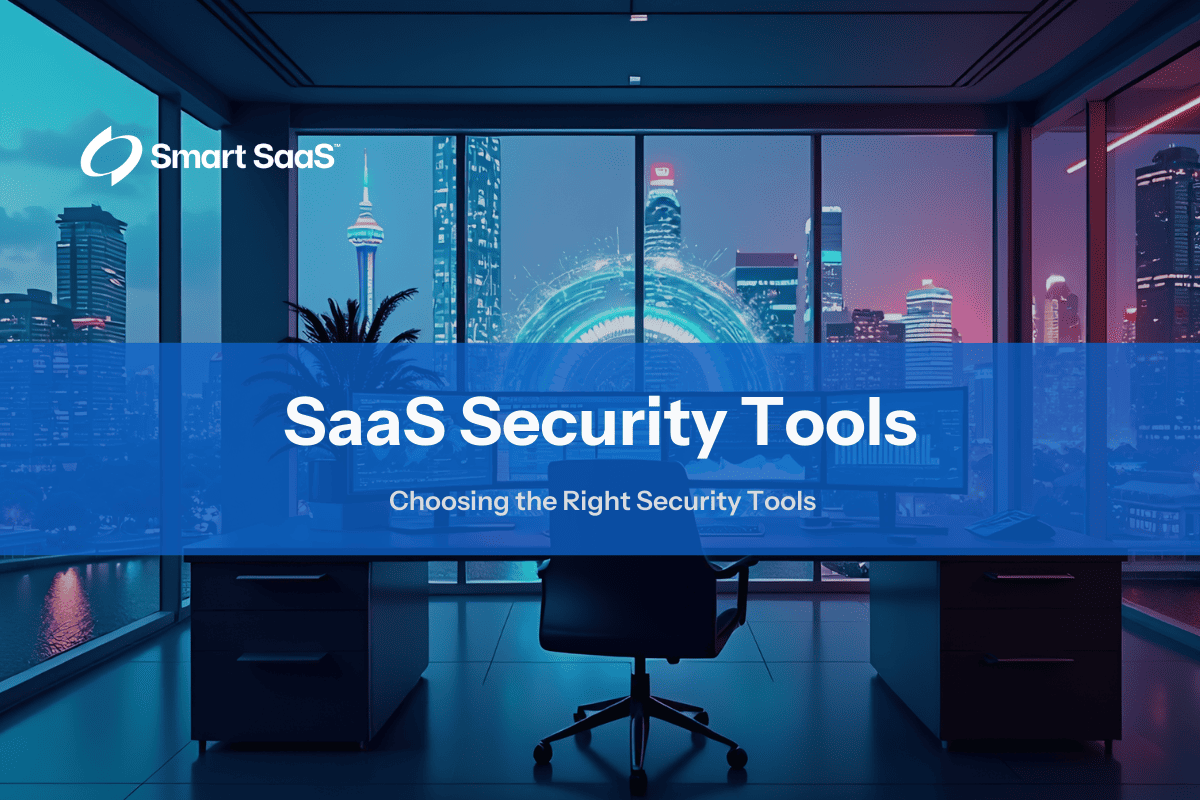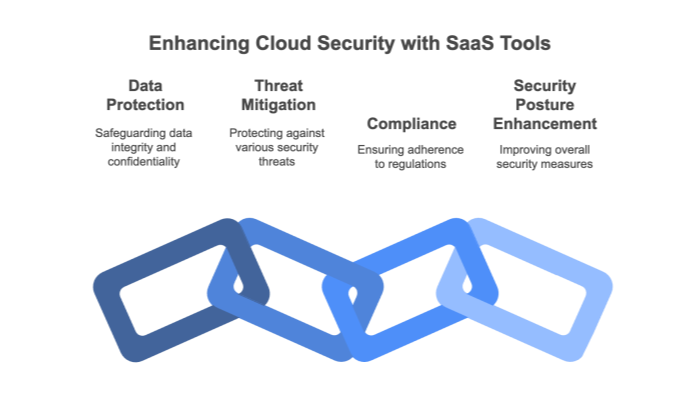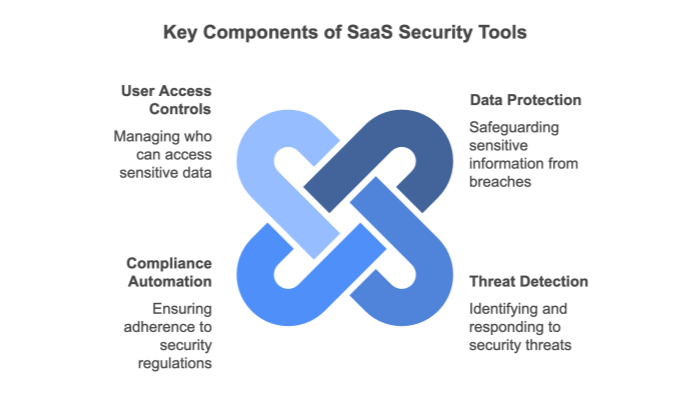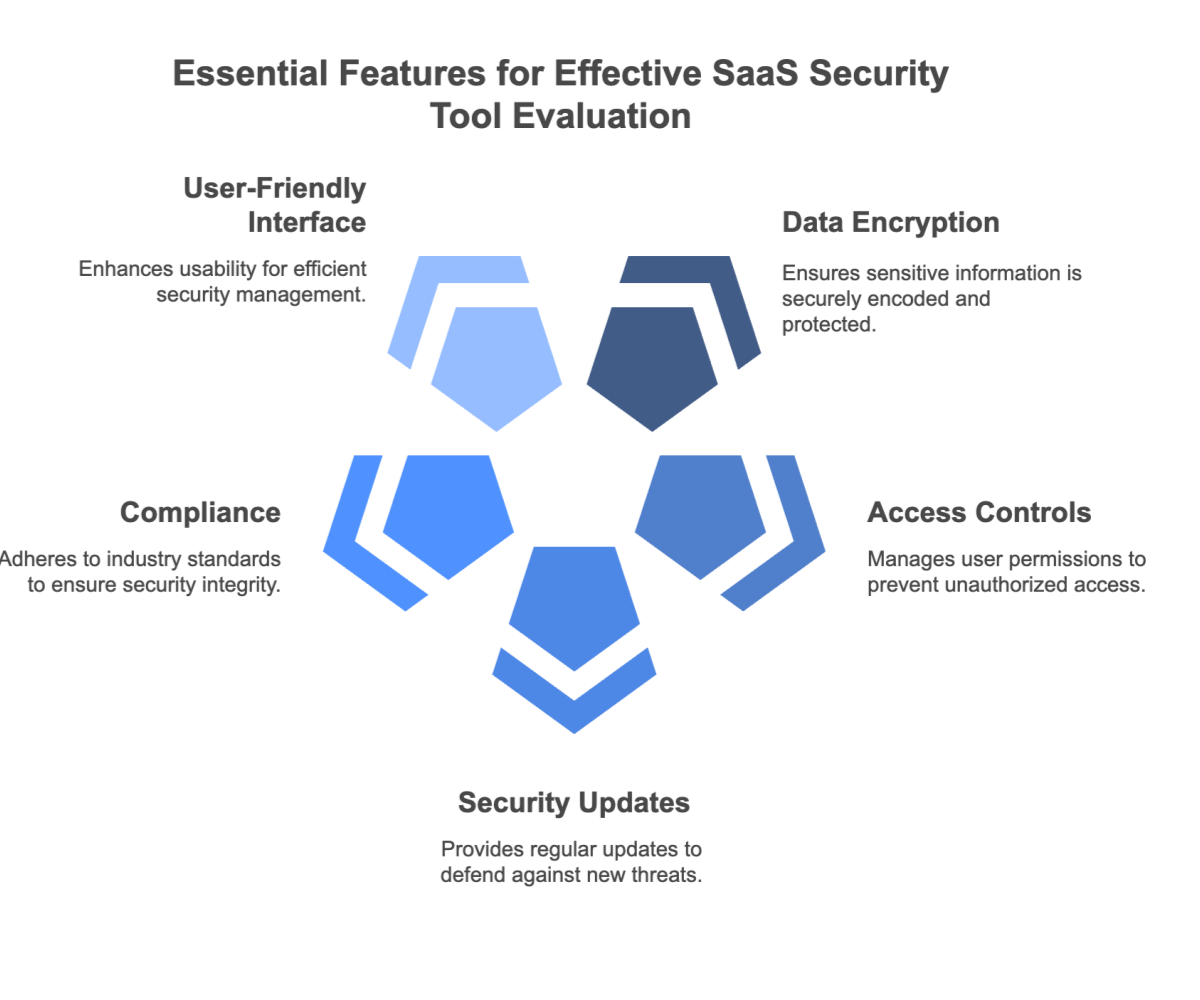

Thursday, March 6, 2025
Kevin Anderson
In today’s fast‑paced digital environment, SaaS security tools have become indispensable for organizations of every size. As businesses increasingly rely on cloud‑based SaaS solutions for everything from customer relationship management to financial operations, protecting these platforms from cyber threats and compliance risks is paramount. A single data breach can erode client trust, incur hefty fines, and disrupt operations significantly.
Modern SaaS security solutions offer robust features designed to meet evolving challenges—they automate compliance checks, detect suspicious behavior in real time, and provide comprehensive SaaS security posture management (SSPM) tools to ensure that your configurations remain locked down.
This guide will explore the key capabilities that the best SaaS security tools for 2025 should offer, examine the features that truly matter, and provide practical tips for choosing the right solution for your organization. Whether you’re starting to build your security tech stack or looking to upgrade your existing tools, you’ll find actionable insights and detailed explanations throughout this article.

SaaS security tools are specialized solutions designed to monitor, protect, and manage risks in cloud‑hosted applications. They are built to address the unique challenges of SaaS environments where multi‑tenant architectures and continuous updates demand an agile and automated approach to security. These tools range from point‑in‑time vulnerability scanners to comprehensive SaaS Security Posture Management (SSPM) platforms that provide continuous oversight.
They help organizations identify misconfigurations, enforce access control, and maintain compliance with regulatory frameworks such as GDPR, HIPAA, and PCI DSS. By integrating these solutions into your security stack, you can minimize the risk of unauthorized access and data breaches while ensuring your cloud applications operate reliably. For instance, if you want to understand how cloud environments differ from on‑premise setups, check out our article on What is a SaaS Environment?, which explains the fundamentals of cloud‑based software delivery.


The importance of robust SaaS security tools cannot be overstated. In a multi‑tenant environment, a single misconfiguration can expose sensitive data across multiple organizations. These tools are essential for maintaining secure boundaries, ensuring compliance, and facilitating rapid incident response. They automate the collection of logs, monitor user activities, and generate real‑time alerts, which are critical for meeting stringent regulatory requirements and protecting customer data.
Effective SaaS security solutions not only prevent external threats but also address risks associated with internal user error. Continuous monitoring and automated remediation help reduce downtime and safeguard your organization’s reputation.
By investing in the right security tools, businesses can avoid costly breaches and legal penalties. To further understand the implications of SaaS security, consider reading our SaaS Management Platforms post which highlights integration challenges and vendor lock‑in risks.


The landscape of SaaS security is evolving rapidly, and the tools of tomorrow must combine real‑time threat detection with robust compliance management. In 2025, the best SaaS security tools will provide unified dashboards, AI‑driven analytics, and continuous configuration scanning.
These tools enable organizations to proactively detect vulnerabilities, automate incident response, and maintain an up‑to‑date security posture across a complex cloud environment. Advanced solutions will also offer seamless integration with existing IT infrastructure, ensuring that security operations do not disrupt business workflows.
Companies must focus on tools that deliver granular control over user access, data governance, and compliance reporting. For example, businesses that are keen on reducing exposure to misconfigurations might also benefit from our insights on Vertical SaaS vs. Horizontal SaaS to compare different security challenges.
Modern SaaS security tools must be able to identify and block threats proactively. They should continuously scan for misconfigurations, track excessive user permissions, and alert security teams in real time when suspicious activities are detected. For example, if unusual file downloads or policy violations occur, the system must send instant alerts. By enforcing robust encryption and strict data access policies, these tools help prevent data breaches before they can escalate. Organizations in industries like e‑commerce, healthcare, or finance benefit from immediate detection and rapid remediation, thereby safeguarding sensitive customer information and avoiding costly breaches.
A unified security dashboard is essential when managing multiple SaaS applications. It aggregates security alerts, logs, and configuration details from across your cloud ecosystem into one central interface. This consolidated view minimizes the risk of overlooking critical alerts and helps IT teams coordinate responses more efficiently.
The dashboard also integrates with SaaS Security Posture Management (SSPM) tools, providing an at‑a‑glance overview of compliance and security posture. Such a tool is invaluable for organizations seeking to streamline their security operations and maintain consistent oversight. For more on integration challenges, our article on SaaS Platforms: Key Features, Applications and Benefits offers additional insights.
Leveraging machine learning algorithms, AI‑driven threat detection systems analyze user behavior patterns to spot anomalies that might indicate a security breach. These tools monitor for unusual login activities, unexpected data downloads, and other suspicious behaviors that traditional rule‑based systems could miss.
When such anomalies are detected, the system can automatically trigger enhanced security measures such as tightening access controls or prompting multi‑factor authentication (MFA). This proactive approach ensures that even sophisticated, zero‑day threats are quickly identified and mitigated, protecting the organization from potential data loss and reputational damage.
Protecting sensitive data requires robust Data Loss Prevention (DLP) measures that go beyond external threat blocking. DLP tools provide thorough content inspection and enforce strict data transfer policies to prevent accidental or malicious data leaks.
These tools are designed to work in tandem with regulatory frameworks such as GDPR and HIPAA, ensuring that your data handling practices meet legal requirements. By integrating DLP capabilities, organizations can control data movement across their SaaS platforms and safeguard sensitive information from internal misuse. For businesses looking for advanced security, our Understanding AI SaaS Companies article offers valuable context on leveraging AI for enhanced data security.
SaaS applications come with a vast array of configurable settings, and each update or added feature can introduce new risks if not properly secured. Continuous Configuration Scanning, a core component of SaaS Security Posture Management (SSPM), automatically maps and monitors these settings to detect deviations from established security baselines.
This proactive scanning ensures that any misconfiguration is identified and corrected immediately, maintaining compliance and protecting your environment. It also provides a historical audit trail of changes, which is invaluable during compliance audits. Regular scans and automated policy enforcement enable organizations to keep their cloud security posture robust and resilient.
Effective access control is fundamental to SaaS security. Implementing Role‑Based Access Control (RBAC) ensures that employees have only the permissions necessary for their roles, while Multi‑Factor Authentication (MFA) adds an essential layer of security beyond simple passwords. Some advanced tools even offer credential hygiene features to monitor for potential exposure of user credentials on the dark web.
This comprehensive approach to access management minimizes the risk of unauthorized access and helps safeguard sensitive data. By regularly reviewing access controls and enforcing stringent authentication protocols, organizations can significantly reduce the risk of account takeovers and other security breaches.


When selecting a SaaS security tool, it is crucial to align the solution’s features with your organization’s specific security needs, regulatory obligations, and budget considerations.
The ideal tool should offer robust threat detection and response capabilities, continuous security posture management, and seamless integration with your existing IT infrastructure. Key features to consider include automated workflows for incident response, AI‑based anomaly detection, and flexible licensing that scales as your organization grows. In addition, look for tools that provide comprehensive dashboards for real‑time monitoring and customizable reporting to support your internal audits.
This holistic approach ensures that all aspects of your SaaS security—from access control to compliance reporting—are covered. For more detailed strategies on enhancing security, you may also find our post on How to Build a Successful SaaS Business Model insightful.


Below are some frequently asked questions regarding SaaS security tools along with actionable steps to help you implement the right solutions for your organization. These insights are designed to guide you in selecting, deploying, and optimizing your SaaS security measures.
The best SaaS security tools in 2025 are those that excel in continuous threat detection, comprehensive SSPM, robust data governance, and multi‑factor authentication enforcement. They should offer seamless integration with your existing IT ecosystem, including identity management and SIEM systems, and provide AI‑driven analytics to adapt to evolving threats. Look for solutions that allow for easy scalability and customization to meet your organization’s unique needs.
SaaS Security Posture Management (SSPM) involves continuously monitoring and adjusting the configurations of your SaaS applications to ensure they remain secure and compliant. SSPM tools help identify misconfigurations, automate remediation processes, and generate compliance reports, ensuring that your cloud environment adheres to industry standards and regulatory requirements.
To choose the right SaaS security tool, begin by evaluating your organization’s security needs and listing all the SaaS applications you use. Prioritize features such as AI‑based threat detection, continuous configuration scanning, and robust reporting capabilities. Ensure the tool integrates well with your existing systems, such as your identity management or SIEM solutions, and conduct a pilot test to verify its effectiveness before full deployment.
Yes, many vendors offer tiered pricing options that make advanced SaaS security solutions accessible to small and mid‑sized organizations. Focus on essential features such as access control, SSPM, and compliance monitoring to avoid expensive add‑ons. Affordable solutions do exist and can provide robust security without compromising on quality.
A SaaS security assessment tool typically provides point‑in‑time scans to identify vulnerabilities and compliance gaps, whereas an SSPM tool offers continuous monitoring and automated remediation. SSPM tools provide ongoing oversight of your SaaS configurations to ensure they remain secure over time, making them essential for maintaining a resilient security posture.

To effectively enhance your SaaS security posture, consider implementing the following actionable steps:

As organizations continue migrating workloads to the cloud, investing in the right SaaS security tools is not merely a precaution—it’s a strategic necessity.
The tools discussed in this guide, from AI‑driven threat detection and unified security dashboards to continuous configuration scanning and robust access control, are designed to protect sensitive data, ensure regulatory compliance, and enable rapid response to emerging threats. By integrating these solutions into your cybersecurity strategy, you can build a resilient security posture that adapts to the evolving digital landscape.
Always assess your needs carefully, run pilot tests, and choose tools that integrate seamlessly with your existing systems. For further reading on cloud security and effective SaaS management, consider exploring our related resources on What is SaaS? and The SaaS Business Model.

Explore additional articles to deepen your understanding of SaaS security and overall cloud management: